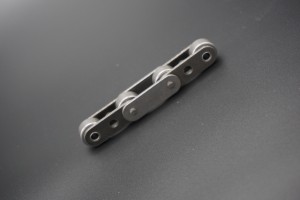Roller chains have been an essential part of various industries for decades. Whether in manufacturing, agriculture or transportation, roller chains are often used to efficiently transmit power or move materials. However, like any mechanical system, roller chains are subject to wear and require regular maintenance and replacement. In this blog, we’ll delve into the topic of when to replace your roller chain, highlighting the signs that need attention and the importance of proactive maintenance.
Learn about roller chains
Before discussing the factors that require roller chain replacement, it is important to have a basic understanding of its structure and function. Roller chains consist of a series of connecting links equipped with rotating rollers that engage the teeth of sprockets to transmit power or transmit motion. When a chain is subjected to constant stress, strain and exposure to external elements, it gradually wears down, leading to reduced performance and potential failure.
sign indicating replacement is required
1. Chain Excessive Elongation: One of the main signs that a roller chain is nearing its end of life is excessive elongation. When a chain stretches beyond its recommended limits, it can cause poor sprocket engagement and can result in noisy operation, reduced efficiency, and potential damage to surrounding components. Regularly measuring chain elongation with a chain wear gauge or ruler can help determine when it needs to be replaced.
2. Corrosion and rust: Roller chains are often exposed to harsh environments, such as outdoors or areas with high humidity. Over time, this exposure can cause the links to corrode and rust. Corroded chains are prone to accelerated wear, reduced strength, and even breakage. If visible rust spots appear on the chain, especially in critical areas, it is recommended to replace the chain to ensure smooth operation and prevent unexpected failure.
3. Excessive chain slack: Roller chains should run with a certain amount of slack to accommodate fluctuations in speed and tension. However, excessive chain slack can indicate internal wear and damage to the links, resulting in poor power transfer, increased vibration, and potential chain jumping. Regularly adjusting chain tension and replacing excessively slack chains is critical to maintaining equipment reliability and operating safety.
4. Visible chain damage: Periodic inspection is essential to identify any visible signs of damage to the chain. Examples of such damage include cracked or broken links, bent or misshapen rollers, and missing or worn pins or bushings. Additionally, any signs of material fatigue, such as scratched or discolored metal, should not be ignored. If any of these problems are found during inspection, immediate replacement is recommended to prevent catastrophic failure.
In conclusion, identifying when to replace roller chains is critical to ensuring the continued efficiency, safety and reliability of the mechanical systems that depend on these vital components. Regular inspections can help spot potential problems early on by noting for signs of chain overstretch, corrosion, excessive slack, and obvious chain damage. Proactive maintenance and timely replacement of roller chains not only prevents costly failures, but also optimizes the performance and lifespan of equipment, ensuring seamless operations across industries.
Post time: Aug-10-2023

